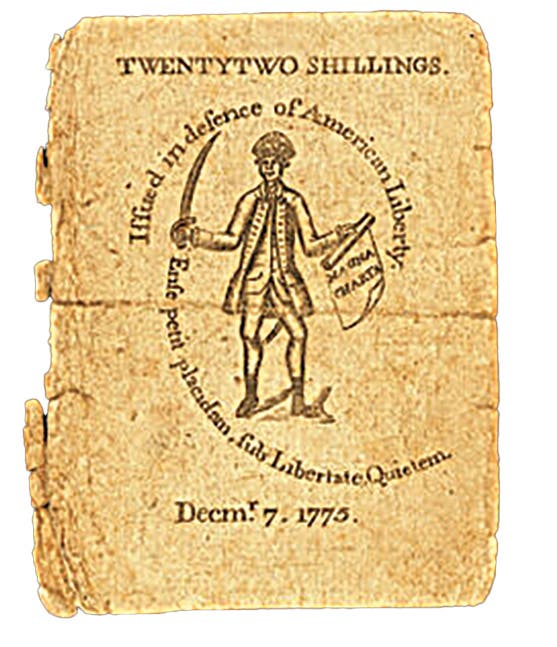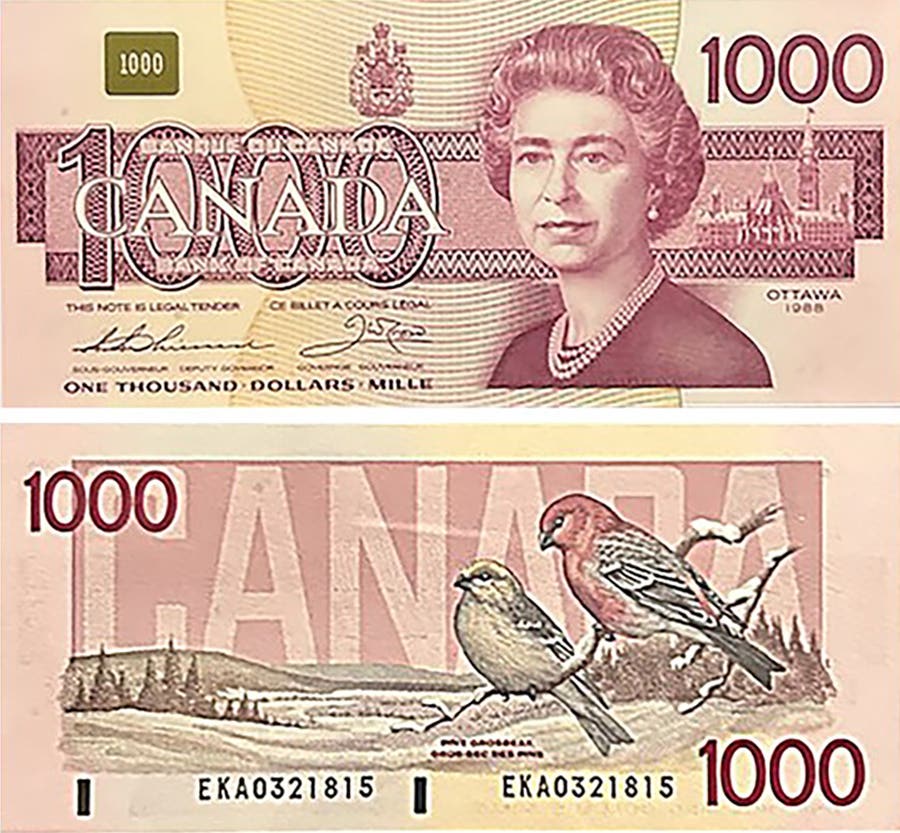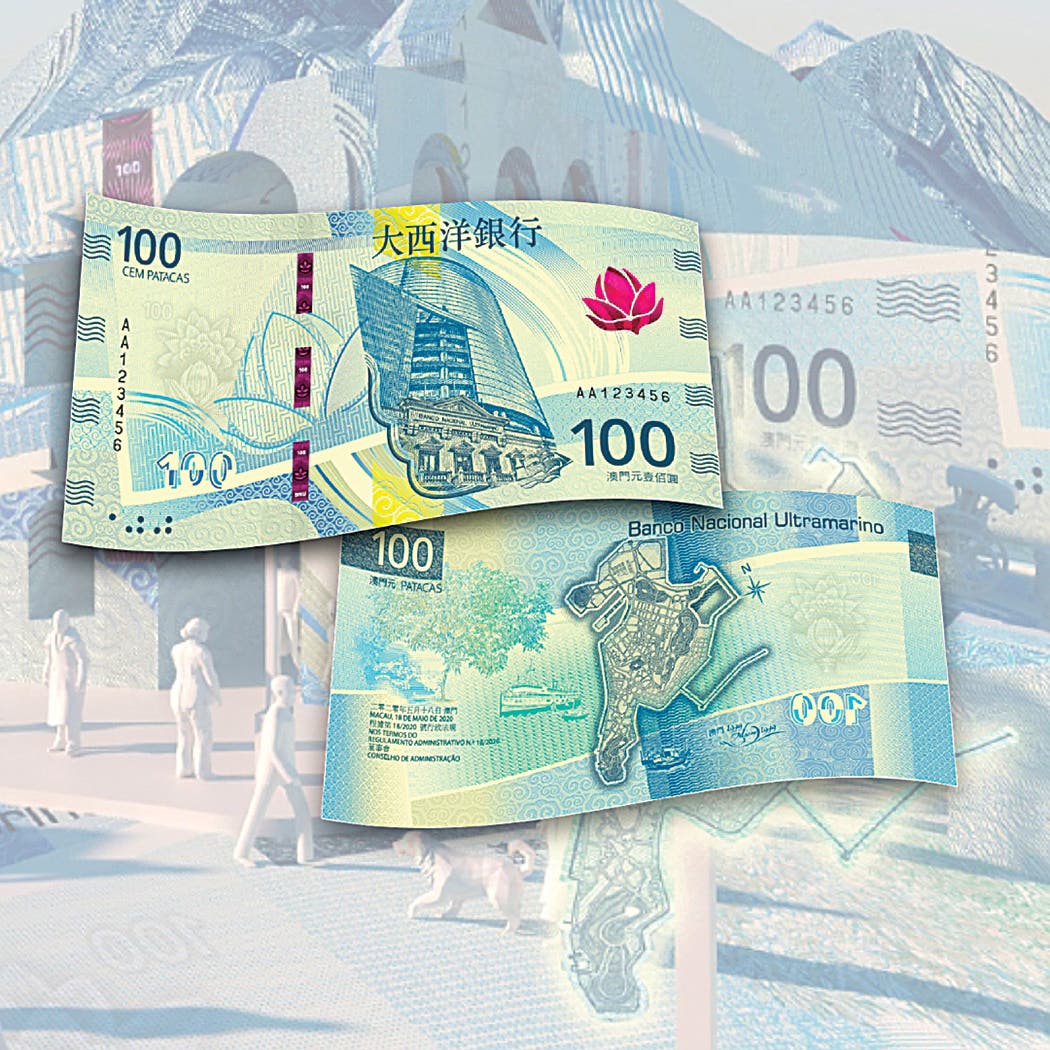1882 NBN $20 Variety 1 Over 3 Discovery
Over the decades, first Doug Walcutt and then Huntoon caused a lot of ink to be spilled over our finding that there were three distinct varieties of the Battle of…
Over the decades, first Doug Walcutt and then Huntoon caused a lot of ink to be spilled over our finding that there were three distinct varieties of the Battle of Lexington vignette on the left side of the Original Series, Series of 1875 and Series of 1882 $20s. The easiest place to spot the different varieties is to look for the presence or absence of the 75 just above the shoe of the wounded man. The 75 is a partial date—the 75 in 1775—that is on the painting from which the vignette was copied.
The 75 was all but removed from variety 1. A light image of the 75 is visible on Variety 2, Variety 3 sports a bold image of the 75. All three varieties were used on Series of 1882 plates. See Figure 1.
A neat occurrence that we recognized was that occasionally when the vignette had to be reentered on worn plates, the siderographer rolled in a different variety over what was on the plate. Walcutt and Huntoon found variety 1 over 2 on Series of 1875 and 1882 plates, and variety 2 over 1 on Series of 1875 plates.
The variety 3 vignette, the one with the bold 75, was found only on Bureau of Engraving and Printing Series of 1882 plates made from a new master die completed in 1900. Plates made from the new master die are those that carry the hidden star in the upper right margin shown on Figure 2.
Walcutt and Huntoon never suspected that the BEP would use one of the ancient variety 1 or 2 rolls to reenter the vignettes on their own plates.
Coauthor Stroup, a true variety aficionado, brought no preconceived biases to the table. In May 2021, he was looking at a friend’s $20 1882 brown back from The First National Bank of Los Angeles with radar bank serial 31213 and noticed it was from a plate with a hidden star but carried a variety 1 vignette. That finding didn’t wash with known facts. He next found a photo of an earlier note from the same plate that had the expected variety 3 vignette. He immediately sent scans of both to Huntoon asking what’s up here?
The only viable explanation was that a variety 1 roll had been used to reenter the plate before 31213 was printed. National bank note face plates were not hardened because they generally weren’t used enough to wear out. However, those that did get used a lot started to show wear after about 20,000 to 25,000 impressions and had to be reentered. At 31213, the Los Angeles plate had easily passed that threshold.
Huntoon rushed to the photos of certified proofs in the Smithsonian holdings to verify this conclusion, wondering why he and Walcutt hadn’t seen it before on proofs for any bank. Here are the proofs for the Los Angeles Series of 1882 10-10-10-20 plates (TABLE 1).
The variety 3 note was printed from the June 29, 1900 plate, which is the same plate that was altered into the D-E-F-B 1882 date back form that was certified August 13, 1908. No variety 1 proof is sandwiched between them.
The D-E-F-B had a string of plate printers’ initials across its top margin demonstrating that it had seen plenty of use before being altered into its date back form.
The problem for all of us is that in 1896, the BEP had dropped the practice of putting stars next to the plate letters to signify that a subject had been reentered AND ALSO stopped lifting proofs from such plates upon reentry.
No wonder neither Walcutt nor Huntoon had spotted a variety 1 over 3 before. The only way it could have been observed was the way Stroup did it. That is find a pair of issued notes that bridged the reentry!
The intriguing wrinkle in this Los Angeles case is the fact that the D-E-F-B date back proof has a variety 3 vignette. We were expecting a variety 1 because that was what was on the plate before it was altered into its date back form!
This conundrum is easily explained by a second reentry made at the time the plate was altered into its date back form. The siderographer making the alteration had to change the plate letter from A to B. In the process he had to damage the vignette to get the A off, so he refurbished at least the lower left corner of the vignette before laying in the B. He used a variety 3 roll to do the job.
What a fabulous chain of events. The plate was altered twice. First to reenter the worn vignettes causing the change in the Battle of Lexington from variety 3 to 1. Second, when the plate was altered into its date back form, the variety 1 vignette was changed back to 3 in the process.
Fascinating is the fact that when the first reentry was made in the early 1900s, the Bureau siderographers still had available to them a working American Bank Note Company variety 1 vignette roll that dated from 1864. That they would use it makes a bit of sense because the only difference between the variety 1 and 3 vignettes was the 75. Who would care about that detail?
In the cases we have discovered, we notice that often a ghost of the 75 remains after the variety 1 reentries. This is caused by vestiges that remained from the overridden bold 75. Walcutt and Huntoon found similar vestiges from overridden vignettes when worn Original Series/Series of 1875 $5 face plates were reentered.
We have found more examples of variety 1 over 3 reentries by searching through the photos of issued notes available in the Heritage Auction archives and National Currency Foundation census. To date, without undo effort, we have found pairs of notes bridging variety 1 over 3 reentries on $20 brown backs for the following banks.
The National Bank of Commerce in New York (733) plate position F
The National City bank of New York (1461) plate position D
The Riggs National Bank of Washington (5046) plate position A
Our search strategy involved a two-step screening. First, we looked for banks that issued more than 20,000-25,000 sheets worth of 10-10-10-20 Series of 1882 brown back notes, because those plates likely had to be reentered owing to wear. Next, we looked for banks that utilized such plates made after April 1900 because those are the plates that carried variety 3 vignettes when made. This includes all banks having charter number 5267 or higher. However, older banks could also have used plates made after April 1900 if they were extended after April 1900 or their issues were so large, they required more than one plate.
You won’t find them looking at the proofs because proofs were not lifted from the reentered version when the variety 1 over 3 oddities were created. Instead look at issued notes or available photos of issued notes for the banks of interest to you.
So far, the occurrences of variety 1 over 3 reentries that we have found resulted from refurbishing worn plates before the brown backs ceased to be printed for the affected banks. Another scenario is possible. The same thing could have occurred when the plates were altered into their date back forms. That is, after the siderographer removed the lower left plate letter, he could have used a variety 1 roll to repair the Battle of Lexington vignette before rolling in the new plate letter thereby yielding variety 1 date backs.
Plenty of Series of 1882 10-10-10-20 plates with hidden stars in their borders were involved in brown back to date back alterations, but so far, we haven’t seen a date back that came out with a variety 1 vignette. Instead, all such repairs appear to have been made with a variety 3 roll.
Clearly this is a pursuit for serious variety collectors. Discovery of a variety 1 over 3 note may not add monetary value to your note, but it certainly can give it added pizzazz. If nothing else, the hunt is enjoyable.
An in-depth treatment of the varieties treated here can be found in Huntoon, Peter, Jan-Feb 2018, The dies that fathered BEP $10 and $20 Series of 1875 and 1882 nationals, Paper Money, vol.57, pages 8-13. A PDF of the article is available on the Society of Paper Money website. Don’t bother looking for the variety 1 over 3 situation because it wasn’t recognized then.








